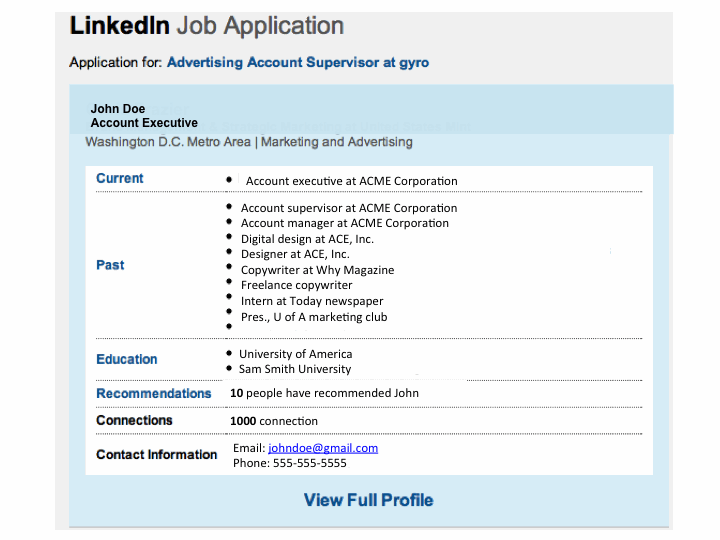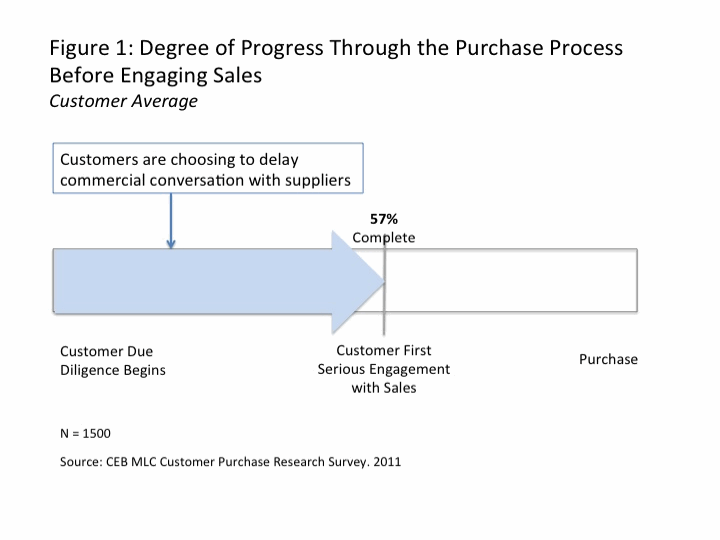by scott.gillum | Jan 21, 2013 | 2013, Marketing
Linkedin’s stock opened at $45 a year and a half ago, it now sits at $120. Unlike Facebook, one of the primary reasons it has done so well is that it found its’ “killer app”early on, and built a business model around it.
For recruiters, Linkedin is the largest (now 200 million members) and most current database of business professionals in the world. For job seekers, it’s a portal into new opportunities, connections and references.
To learn more about its capabilities as a recruiting tool, we posted an open account supervisor position for our DC office on Linkedin. The resumes have been sent directly to me for the past month. Unfiltered by a recruiter or HR person, I got a direct shot of the power of Linkedin. As the hiring manager, I learned a good deal about using the tool, and how job candidates can better marketing themselves for posted positions.
Because of the volume generated by Linkedin, hiring managers have the luxury of trying to find exactly what they are looking for without having to dig too hard to find it. We quickly scan the email summary and the attachments. As a result candidates need to:
- Read the job description – hiring and HR managers spend a great deal of time defining the role. Take the time to adapt your resume to highlight those areas that best match what we are looking for don’t make us connect the dots because we won’t…we’re already on to the next candidate.
- Customize your cover letter – tell us why you’re the right candidate for the position in the cover letter, especially if you can’t link it on your resume. Make a compelling case as to why we should spend additional time looking at your resume and background. A generic cover letter is a waste of time and a sure way to take yourself out of the race.
- Know that we will check you out – if we find someone we like, we’ll spend time checking your Linkedin profile (beyond the email summary below) our current and former employers, as well as your social profile. For example, a person that caught my attention was eliminated from the process because I couldn’t find their last two employers on the web. The learning – companies go out of business or are acquired all the time, make sure your resume reflects or notes that change. We will “Google” you.

- Brands count – recruiting firms use key word searches to pull resumes. As for me, I scanned resumes also looking for those “key words.” Again, because of the need for speed certain words “pop.” Brand name companies caught my attention (whether the candidate worked for them or had them as a client). Schools you attended, the types of skills you have, and your accomplishments, especially if they were award winning. I also took notice of the number of Linkedin connections and references…it does matter, I’m looking for a good marketer.
- Using a connection/s works – leverage your Linkedin connections to find a common link to the hiring manager or job poster for an introduction. I trust the recommendations of people that I’ve worked with in the past. As a result, do your homework. The closer the connection to the hiring manager or recruiter the better chance it will get you noticed.
- What does not work – I found the executive education programs to be confusing. It took too much of my time to figure out if you graduated or only took a class. Consider moving the later under skills or experience rather than putting in education. I also found resumes that were more than 2 pages too long to read. A summary is a good to have upfront, but don’t go beyond more than a third of the page. Get into your experience quickly.
Talent is the lifeblood of an agency…for that matter most companies. What you think, say and produce grows our business. We need you, and we have jobs. Help make it easier for us to find you, link your experience and expertise to our needs. Hurry, I need someone…like yesterday.
by scott.gillum | Jan 2, 2013 | 2013, Sales
Twenty-five years ago, I was a snot-nosed kid out of college who suddenly decided that law school was not in the future. With a recession on, and needing to pay the rent, I took the first job offered and went into sales.
Having learned nothing about the profession in college, I picked up a copy of Miller Heiman’s Strategic Selling — still have a dog-eared copy on my bookshelf. I learned everything I could about the buyer types, account management, and the sales process. “Know the process work the process,” as my first sales manager used to say.
Typically, that process came down to 5-to-7 steps that generally covered the following areas below.

Over the years, I found that working the process helped give you sense of control. It came down to the numbers; calls, leads, transaction sizes or conversion rate. Call on X number of qualified prospects to get Y amount of proposals, at Z close rate, and you made bonus.
But, research from Google and CEB entitled The Digital Evolution in B2B Marketing provides new insight into buyer behavior, and it challenges the conventional wisdom. According to the study, customers reported to being nearly 60% through the sales process before engaging a sales rep, regardless of price point. More accurately, 57% of the sales process just disappeared.

What are buyers doing if they’re not talking to sales? Well, they’re surfing corporate websites to identify and qualify vendors, instead of the sales forces qualifying them. They are engaging peers in social media to learn more about their needs, potential solutions, and providers. And they’re reading, listening to, and watching free digital content that is available to them at the click of a mouse. No longer is the sales force the sole source of information.
What does this mean for sales and marketing?
The study recommends focusing efforts in three areas; 1) improve marketing communication integration, 2) develop and activate a content strategy, and 3) strengthen multichannel analytics. Nothing new or breakthrough here, but the study provides good examples of how companies are executing against each point.
However, I found a number of other points to take from the research.
- It is not all bad news – for products or services with low price points and/or margins, having customers self direct themselves through the sales process can help reduce the cost of sale and/or create leverage for the sales force. In fact, in certain situations an organization will want to encourage and/or incent this behavior. The research also found that some customers felt comfortable going through 70% of the process before making contact.
- Changing buying behavior – an old manager used to say that technology changes fastest, then consumer buyer behavior, and eventually, organizations. The “57%” stated in the research makes for a good sound bite; the fact is, that number will vary, greatly by customers, transaction, industry, etc. The point is that change is a constant; the question is how far ahead or behind is your sales and marketing efforts? Are you keeping pace? The second question is, how would you know?
- Content Distribution – as the study notes, the sales force is still the most effective and important communication channel. When developing the content strategy ensure that the best and/or most valuable content is not in the public domain, reserve it for the sales force.
- Time to Take Social Media Seriously – with well-informed prospects, sales reps have to quickly learn what buyers know or perceive about the organization, products/services and competitors. Social media can help them better understand what is motivating buyers to take action, what buyers believe to be true, and perhaps most importantly, who they believe.
The Future
Business decision makers will continue to drive their buyer process deeper into the sales process. As a result, relevant content will continue to escalate in value, especially content related to consideration and purchase drivers, and the business application of the product or service.
Social media and monitoring has helped many marketing organizations understand this trend and to make the transition from being content “dictators” to information “facilitators.”
For sales, the research may be an epiphany. No longer can it be successful focusing solely on an inwardly directed process intended for reporting and planning purposes.
With ever-increasing knowledgeable buyers waiting longer to engage, sales has to transition from being a “product pusher” following a process, to an insight “provider” adding value to the buyers business. As the study states, sales must deliver “pointed insights and evidence that seek to challenge an entrenched point of view among potential customers.”
Finally, it is time to recognize that we’re not in control, and perhaps we never were. The traditional sales process is now obsolete; it is now time to follow the buyers’ journey.









